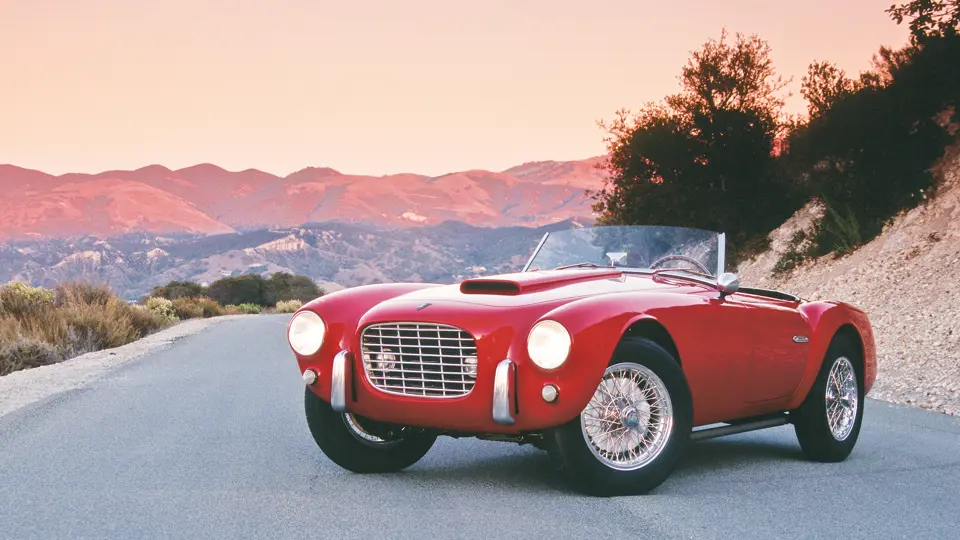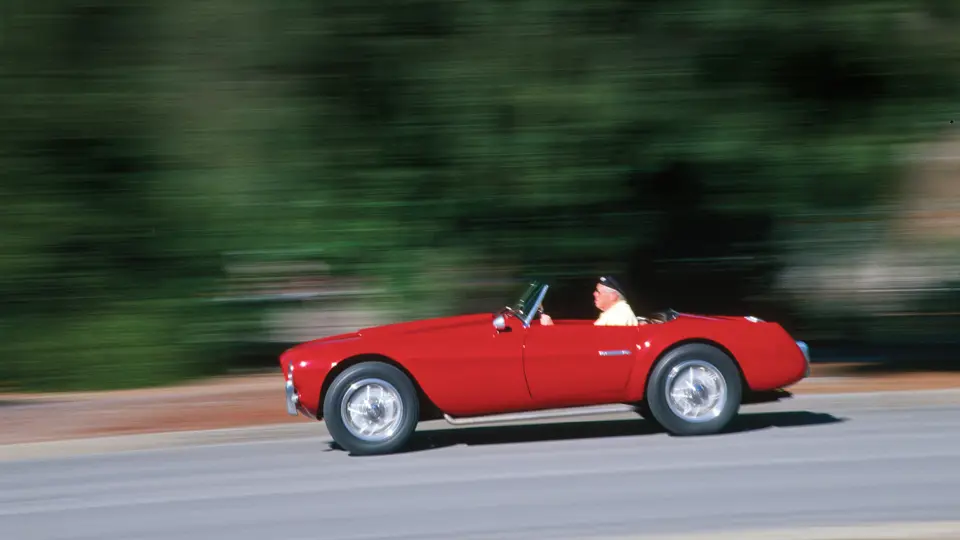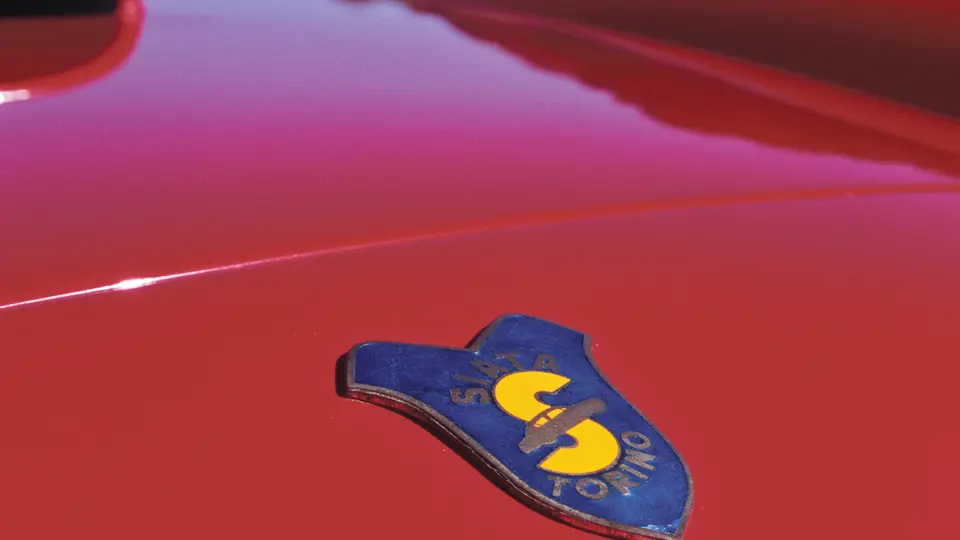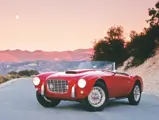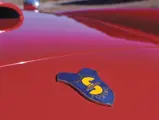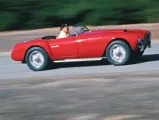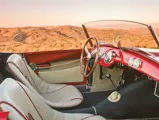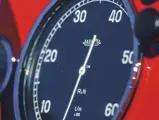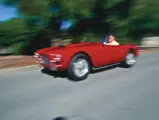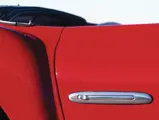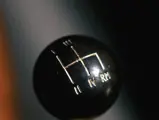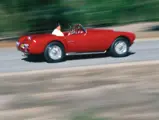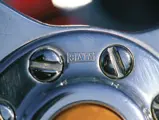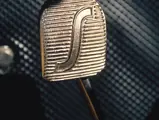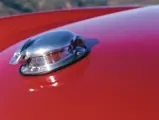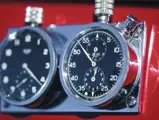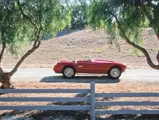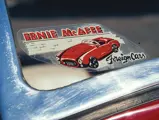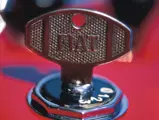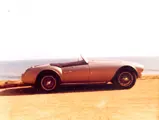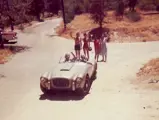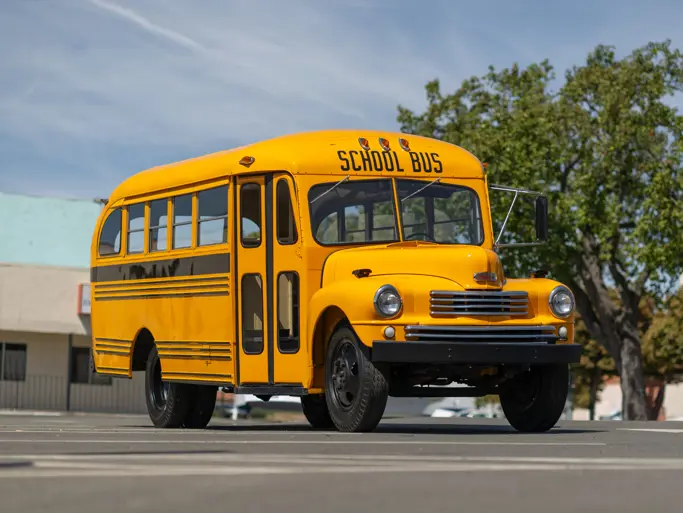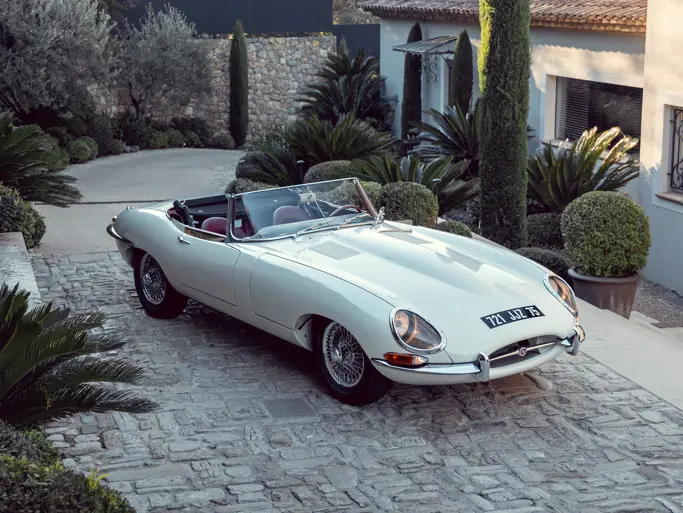Est. 132 bhp @ 6,300 rpm, four-speed manual transmission. Steel tube frame and four-wheel independent suspension all-round by unequal length arms and coil springs in concert with shock absorbers on all four corners. Large aluminum hydraulic drum brakes were used. Top speed c. 120 mph with aluminum Bertone Spyder body. Wheelbase: 106"
- Formerly owned by Steve McQueen
- Legendary “8V” power with rare, attractive and desirable spyder coachwork
- Multiple concours awards; shown at The Quail, twice at Pebble Beach and part of an extended exhibit at Petersen Museum
- In excellent condition, a superb event entry, eligible for the Mille Miglia
SIATA
Societá Italiana Auto Trasformazioni Accessori (SIATA) created a marvelous assortment of machinery in its 45-year history under the guidance of the Ambrosini family. Founded by Giorgio Ambrosini in 1926, Siata specialized in performance modifications for Fiats, employing the intuitive skills of Ambrosini and his Turinese craftsmen to create the overhead-valve conversions, multi-speed gearboxes, superchargers and multi-carb intakes that competitive Italians wanted for their diminutive Fiats. The Italian auto giant with few exceptions conspicuously ignored the high performance market as the Agnellis progressively concentrated their volume production empire around sensible and reliable small cars and left the specialized high performance projects to ingenious independents like the Ambrosinis.
The first actual Siata car, the Amica, was built in 1939. After WWII, Siata produced a very successful auxiliary bicycle motor and returned to producing performance accessories. In 1949, it released the new Amica, followed by the Diana and various competition cars.
THE ICONIC ‘OTTO VU’
Firmly grafted to Fiat and its engineering, Siata took a giant leap forward with the arrival of Rudolf Hruska in 1950. Hruska had worked in the Porsche design office before the war and later collaborated with Carlo Abarth on Piero Dusio’s Cisitalia Grand Prix project. Fiat itself plotted its re-entry to the top ranks of Italian performance automobiles in 1950 with the introduction of the two-liter V-8 (dubbed "Otto Vu"), whose development was entrusted to Siata. The oversquare, unusual 70-degree 8V engine featured an aluminum block and heads with wedge-shaped combustion chambers. Induction was through a pair of dual-throat, downdraft Weber carburetors. With its high-revving short-stroke design and 8.5:1 compression ratio, prodigious power was channeled through a four-speed manual gearbox.
Hruska put Fiat’s ‘8V’ engine in a chassis with fully independent suspension which Siata had originally designed for the Fiat 1900 four, and this became the basis of the Fiat Tipo 106 8V. Created and built in total secrecy, it was introduced at the Geneva Salon in 1952, where it caused a sensation. Ultimately fewer than 200 8V engines were made, powering 114 Fiat Otto Vu models in all, only 34 of which were bodied in-house by Fiat. The remainder carried some of the most influential designs of the era by carrozzeria such as Zagato, Vignale and Ghia with its landmark Supersonic. Zagato offered a particularly stylish variant, known as the ‘Elaborata,’ as well as a competition-oriented berlinetta similar in profile to the Maserati A6G2000 and Alfa Romeo 1900 Zagatos, and proved extraordinarily competitive road racers through nearly the end of the 1950s. An 8V Zagato berlinetta won its class in the final Mille Miglia (1957) for instance, with an average speed of 122.7 km/h.
Elio Zagato raced these cars himself, and this was purportedly his favorite of all Zagato designs. He won a number of races in lightweight 8V Zagato berlinettas, and he said in an interview that the 8V had never failed him.
The remaining 8V engines were given to Siata which seized the opportunity to put them in the very chassis from which the Otto Vu had been developed, calling their V-8 sports car the 208S (2 liter, 8 cylinder, Sport). Benefiting from Siata-designed camshafts and better-breathing heads, the 105 hp Otto Vu was cranked up to a claimed 115 hp, resulting in a top speed of 110+ mph. The advanced Siata tubular frame chassis featured a fully independent suspension with coil springs and telescopic shock absorbers at all four corners and was a marvelously sophisticated platform for its time, with supple and predictable handling that amazed drivers accustomed to the rigidly-sprung, ‘flex-framed,’ live axle sports cars of the time.
Clothed in a variety of coachwork styles including coupes by Bertone, Vignale and Stabilimenti Farina, the all-alloy 208S Spyder penned by Michelotti for Stabilimenti Farina is regarded by many as the most elegant. A clean and refined design with extended rear fender peaks that brilliantly define the body line, its modern appearance complements its excellent chassis dynamics. Attractive from every angle, it is the very picture of a lithe yet purposeful open sports car. Indeed it is unquestionably a pioneering design with proportions adapted by automotive stylists through the present day. About 35 examples of the Spyder were produced.
Many, if not most, of the 208S Spyders were sold by Ernie McAfee, legendary SoCal hot-rodder turned distributor of Italian exotica, via his dealership on Sunset Boulevard in Los Angeles, where he also represented Ferrari, Alfa Romeo, Moretti and Osca, among others. McAfee himself raced a 208S in the 1953 La Carrera Panamericana (BS503).
Production of the 208S ended in 1954 when the supply of Otto Vu engines ran dry. At $5,350, it was half as pricey as a new Cadillac or Porsche and approaching the costly 12-cylinder Ferrari. Expensive and glamorous, with fabulous press reviews, interest was high but sales were slow; McAfee was reportedly still selling new 208Ss through 1957.
In recent years the many charms and exclusivity of the Siata 208S have received substantial recognition, still rarely seen but always pleasing crowds and winning awards at major concours and touring events alike. An attractive ‘show/driver’ condition 208S was just honored at the 2011 Villa d’Este Concorso d’Eleganza in the ‘New Dawn – Small Car, Big Performance’ category.
Steve McQueen’s 208S – chassis BS523
This particular example of the Siata 208S Spyder, BS523, was sold new in Los Angeles by Ernie McAfee. Circa 1956 it was acquired from McAfee by the young acting sensation Steve McQueen who attached Ferrari badges and referred to it as his ‘little Ferrari.’ By 1958 he sold the car via McAfee Engineering to Bruce Sand, then a graduate student at UCLA Medical School. At that time, the car was liveried in its original gunmetal grey (with yellow California plates, registered MTY 906). Soon after his purchase, Bruce realized the car was missing its side curtains and dropped by McAfee’s shop to inquire as to their whereabouts. Informed that Steve had them, he was sent to McQueen’s house to retrieve them. This was not to be their last meeting involving the Siata.
Dr. Sand recounts an unforgettable encounter with McQueen in the May 2009 issue of Octane magazine, where he reports that McQueen once commandeered the car and took him for “the ride of his life.”
Driving down Sunset Strip after midnight, Dr. Sand recalled, “A Ford convertible came roaring up and forced [the Siata] to the curb. Out popped McQueen. There was no ‘Hello!’ or ‘May I?...’ He just walked up and said he wanted to drive the Siata.”
Sand moved to the passenger seat, and McQueen got in and went tearing off, heading up Coldwater Canyon and Mulholland Drive. “Steve drove the Siata flat-out,” Sand continued. “I was glued to the seat and didn’t even have the time to be frightened.” At the end of the enigmatic adventure, “Steve pulled in behind his Ford. He hadn’t uttered a word and just got out of the Siata and returned to his own vehicle.”
The Siata subsequently went through the hands of a number of owners, eventually finding its way back East. Larry Frye found the car in North Carolina around 1983 and finally succeeded in buying it from a Lee Dart in 1991. Frye then began an extensive restoration (over $175,000 in receipts) by the estimable Knute Kollman, finished with body and paint by Brian Hoyt of Perfect Reflections. When Kollman built the engine, he performed his useful and desirable internal lubrication modifications to the block, installed 2.3-liter pistons and cylinder liners, along with other upgrades which yielded an impressive 137 hp on the dyno.
Upon completion, Frye was invited to exhibit the Siata at the 1994 Pebble Beach Concours d’Elegance in the Custom Italian Coachwork class where it placed Third. It was shown at various other California Concours events, usually earning a First in Class (Hillsborough, Lafayette, San Jose and others). In 1999, he also secured FIA official authentication papers in preparation for an intended Mille Miglia entry.
The car’s current owner purchased the car directly from Mr. Frye in October, 2000. It was promptly entered in the inaugural Mille Autunno Rallye, ran in the California Classic Rallye the following June, and was awarded ‘Best Italian Car’ at the 2001 Concours on Rodeo [Drive]. Later, the Siata was comprehensively refreshed under the expert guidance of Ivan Zaremba at specialist shop Phil Reilly & Co. in Corte Madera, California, who sorted the car to ensure that it performed as well as it looked.
Upon completion, it was entered in the 2005 Pebble Beach Concours d’Elegance, after which it was displayed at the Quail Motorsports Gathering in 2006. From there it was part of the ‘Cars of Steve McQueen’ exhibition at The Petersen Automotive Museum in Los Angeles. It was also shown at Concorso Italiano in 2007 and was accepted to run the Colorado Grand in September of 2007. A trip to Epifani Restoration for event preparation revealed that the engine required attention. The owner took the opportunity to commission a full rebuild at Epifani, including new pistons, rods, valves, tappets and bearings. The camshaft was hard faced and the lifters hard chromed. The water pump was modified, and new, state-of-the-art head gaskets were fitted. The original distributor and generator were replaced with more modern, reliable components. (All the original items are offered with the car.) The carburetors were rebuilt and the heads “flowed.” The engine was completed in the Fall of 2008 and since then has logged fewer than 400 miles.
Further references on chassis BS523 are to be found on pages 1,152 and 1,153 of the exhaustive monograph on all the 8V-powered cars, Otto Vu by Tony Andriaensens, and other tomes, including the recently compiled McQueen’s Machines by Matt Stone.
Today, the car is presented in outstanding condition both cosmetically and mechanically. The custom deep Ruby Red paintwork by Brian Hoyt was completed to the highest standards and has been carefully preserved so that it remains exceptional. Close scrutiny reveals a few small chips on the front of the car from road use, but the car is otherwise free of significant blemishes. The polished aluminum trim and Boranni wheels are excellent and are shod with the period-correct Michelin X tires. The glass and lamps are also excellent, and a pair of auxiliary driving lamps has been fitted behind the grille.
The interior is both functional, elegant and most might say even beautiful. The attractive Oyster-toned leather upholstery (tastefully piped in red) is mellowing nicely, and the floors have the correct black diamond rubber matting. The painted dashboard featuring jewel-like Jaeger instruments are excellent, and the wood steering wheel professionally restored. The contrasting oatmeal carpets are in excellent shape as well, as is the black soft top. A set of modern safety harnesses complete the inside picture.
The engine compartment can only be described as stunning, having been fully detailed when the engine was rebuilt in 2008. Extremely correct in appearance and finishes, the 8V engine is itself a work of art with its shapely exhaust manifolds and unusual airbox. The underside is equally nice, very well detailed and exceptionally dry. The sophistication of the chassis design is evident and, once again, truly remarkable for its time.
Included with the car are four impossible-to-find original manuals: the McAfee original operating instructions, an 8V engine manual (original and, uniquely, with Ferrari stampings from their archives), an 8V engine parts book (original), and an 8V specification list. Other documents include a notarized letter from Dr. Bruce Sand attesting to the Steve McQueen history, five period photographs from Dr. Sand circa 1958 and the FIA paperwork. (FIVA certification has been applied for at the time of this writing.) There is a limited collection of spares as well as all the original items that were substituted with more modern, reliable components to ensure dependability on the road. It is complete with its top and side curtains, as well as a custom-designed tonneau cover. An impressive reproduction tool kit is also supplied (replicated from that of BS529), and a very rare set of period-correct Heuer rally instruments (watch and stop-watch) are affixed to the dashboard.
Among the few surviving examples of the Siata 208S, BS523 must be considered among the finest examples of this unusual yet desirable breed. The car’s provenance is impeccable and its condition exceptional, always treated to the best care by the most experienced professionals with exotic Italian automobiles, without regard to cost. Its fascinating history and superb presentation make this Siata an appealing contender for any serious collection of pedigreed sports machinery and thus represents an outstanding opportunity for the enthusiast who appreciates its historical importance, rarity, high performance, sophisticated road manners and stunning good looks – among the most beautiful to ever clothe the exotic, iconic 8V engine.
And finally the Siata is a highly eligible entry into any world-class driving event from the Mille Miglia to the Colorado Grand to California Mille and remains cosmetically strong enough to compete successfully at any number of show events. If there was ever a car that ‘ticks all the boxes,’ this has to be it.
Siata 208S BS523 Driving Impressions
By Winston Goodfellow
For a feature in Octane magazine (No. 78, May, 2008) I spent two days with the Siata’s long-term owner photographing and driving BS523 in the area around his Monterey Peninsula home. On the second day, he threw me the keys and said, “Go, enjoy it. Return it when you’re done.” So off I went, spending the majority of the time blasting along the Laureles Grade, several miles of stupendous road that snakes its way up and down the California hills near Laguna Seca Raceway.
The Siata V8 was an absolute sweetheart from the first moment. It requires feathering the throttle below 2000 rpm, as I discovered when merging onto a faster road as a large truck barreled towards me. But once the twin Webers cleared their throats, the Siata steamed forward in one long, continuous push.
This came as a surprise, for one typically associates Italian performance cars with peaky engines. But as the miles passed, the Siata resembled another torquey thoroughbred – the Iso Grifo GL 365. Both the 208/S and the Iso’s solid lifter 327ci Chevrolet have gobs of torque, so they simply pull harder the higher the revs go. The noise was fabulous – another trait the Fiat V8 shares with the 5.3-liter Chevy. I could hear the tappets at work, sounding even silkier than the Iso.
The four-speed ’box had a long throw and no syncro in first, but all the ratios exhibited a small amount of notchiness that let me know when the shift was complete by the lever slotting in.
What makes the Siata most rewarding is that it takes a bit of time to understand the chassis, gearbox and brakes. To go fast through a corner, you brake early, let the rear set up, then use the prodigious torque to power through. In a series of quicker turns, engine braking suggests you don’t touch the center pedal at all.
In many ways the Siata is a better car than its contemporaries such as an XK120, a Ferrari 342 and even a California Spider because of its superior balance, refinement and agility. And I do like the coolness bestowed by the 208/S’s ‘only 35 built.’ Then there are many subtle touches I like, such as the small ‘SIATA’ on the steering wheel and the ‘S’ pattern on the pedals.
Perhaps the greatest endorsement I can give this jewel of a car is that I was having so much fun I ended up being a couple of hours late to pick up my Shelby GT from the Ford dealership. After all, I was given use of the car for as long as I wanted…


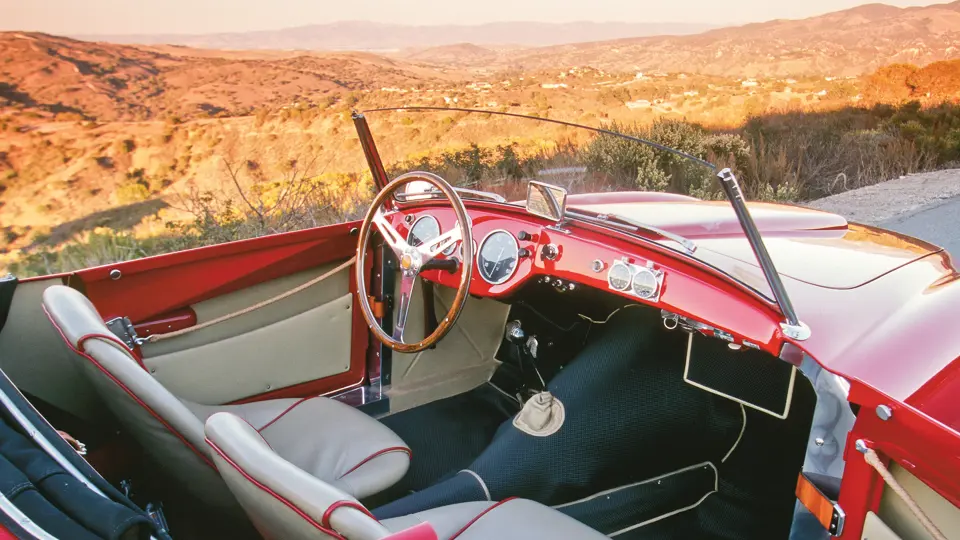

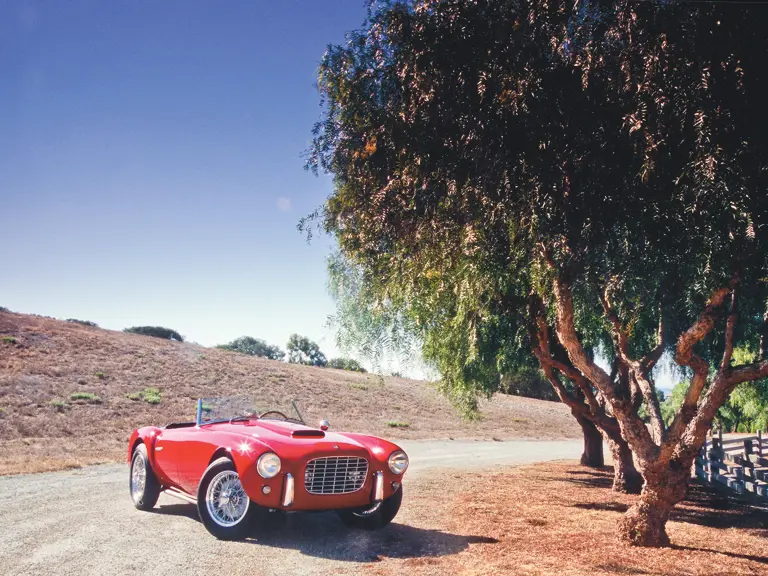
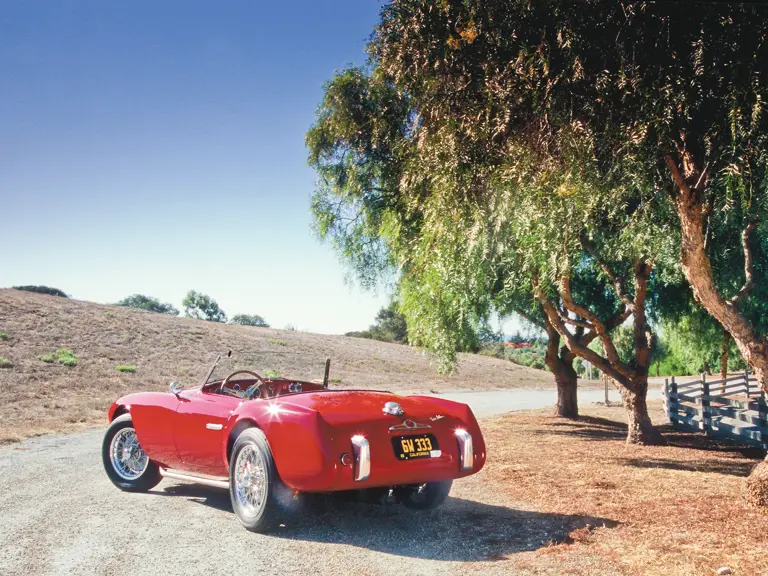
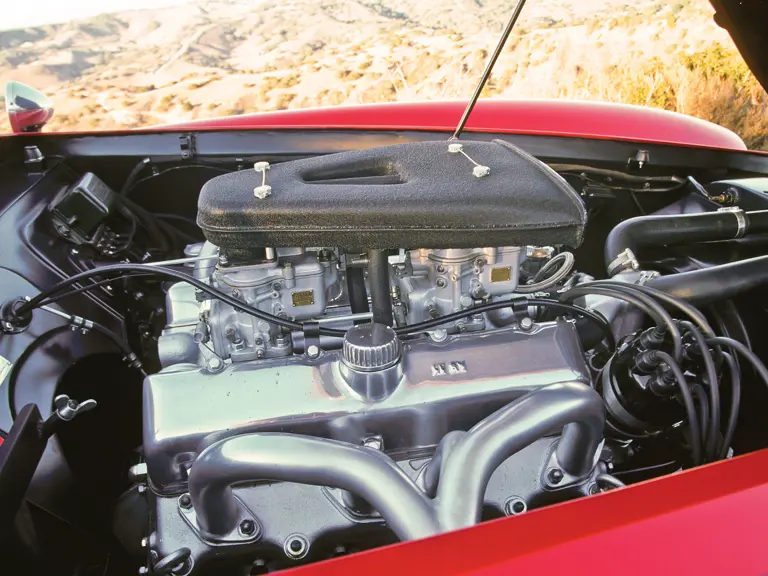

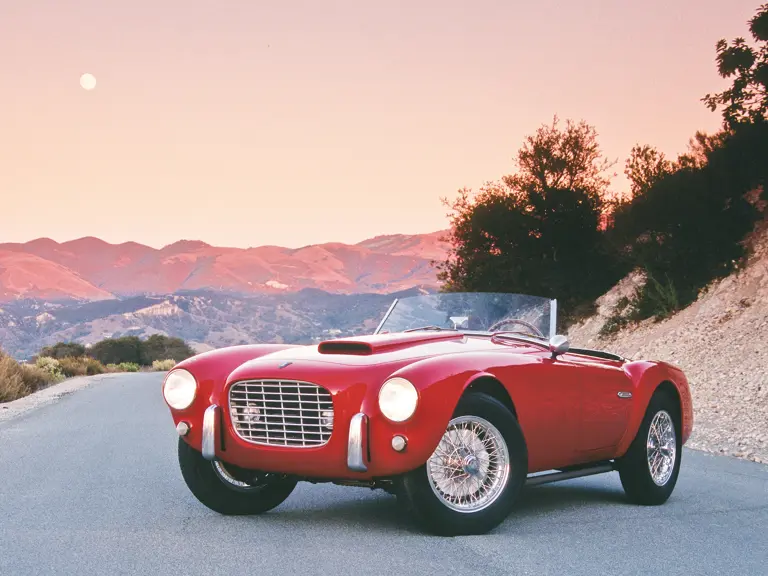
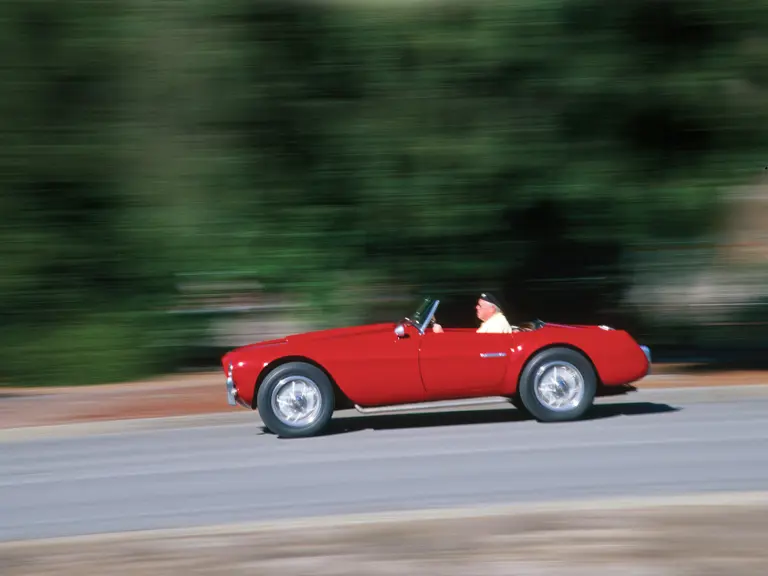

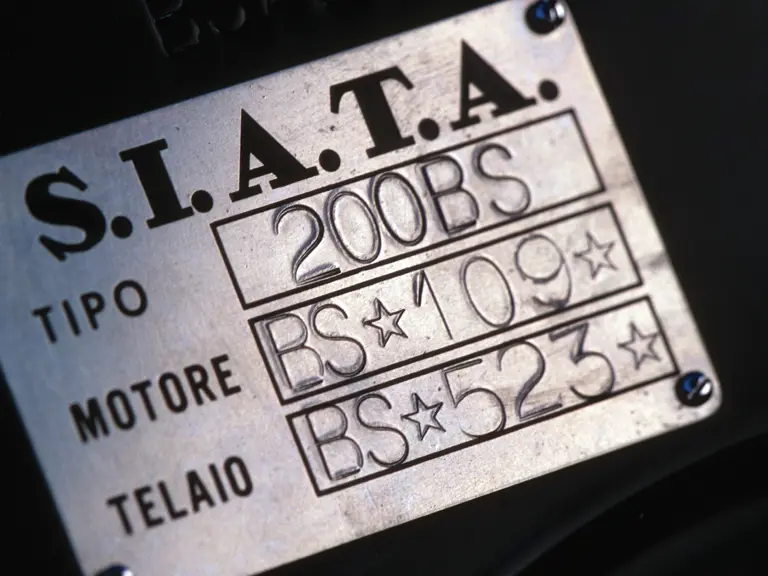

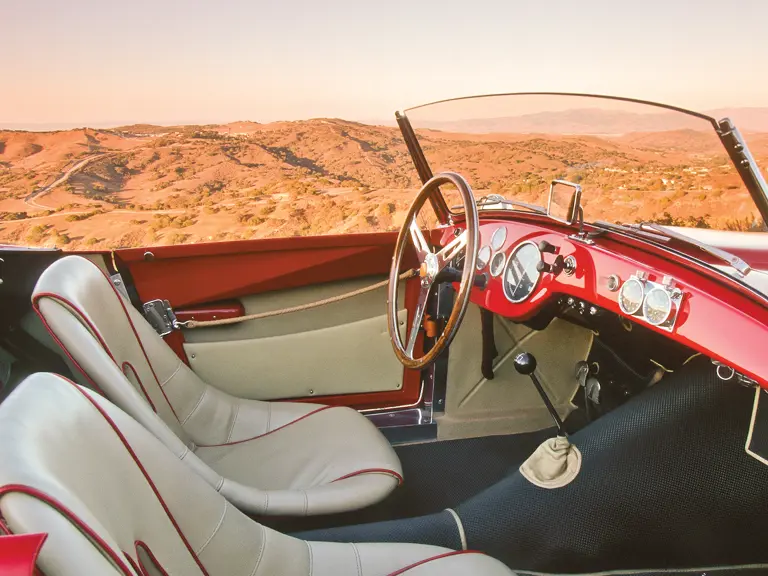
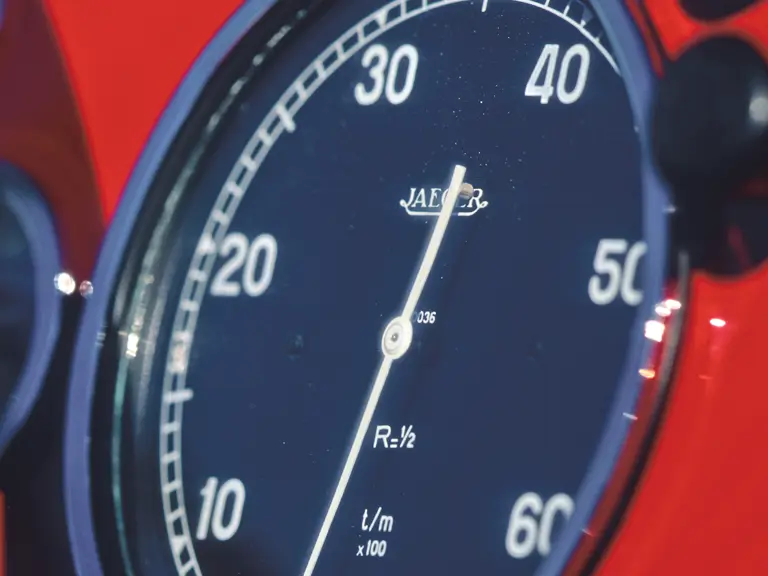
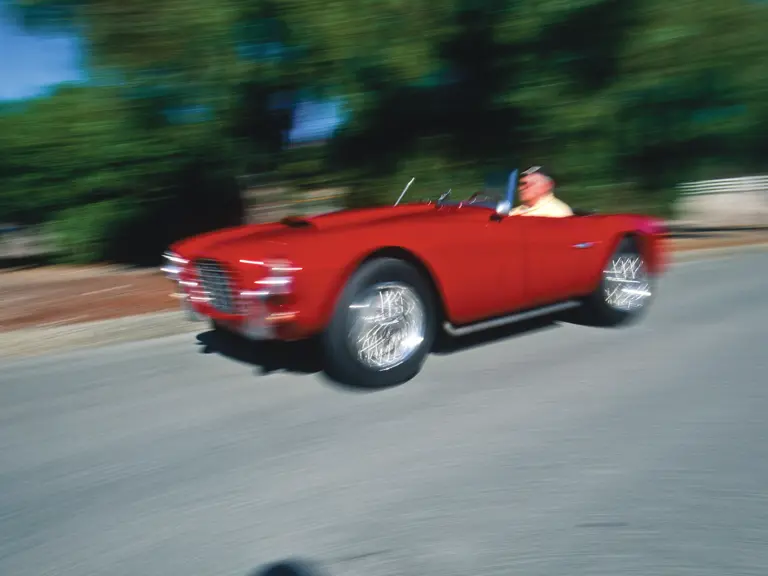
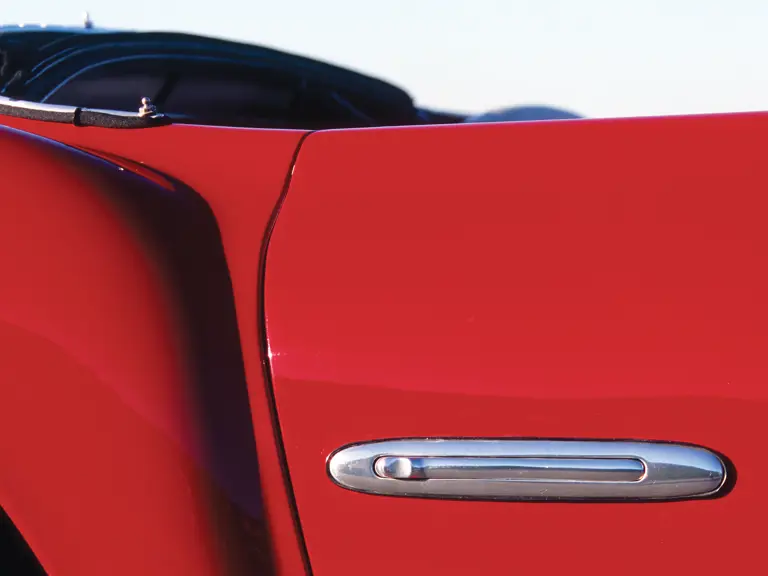
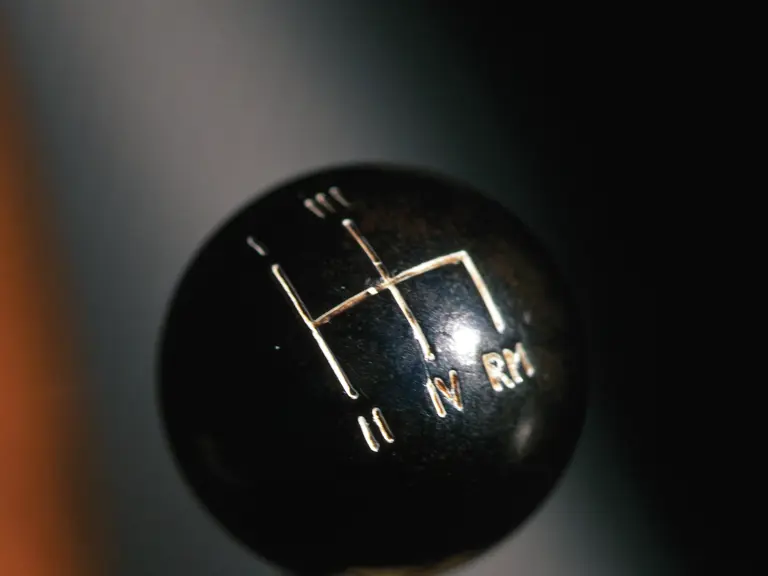
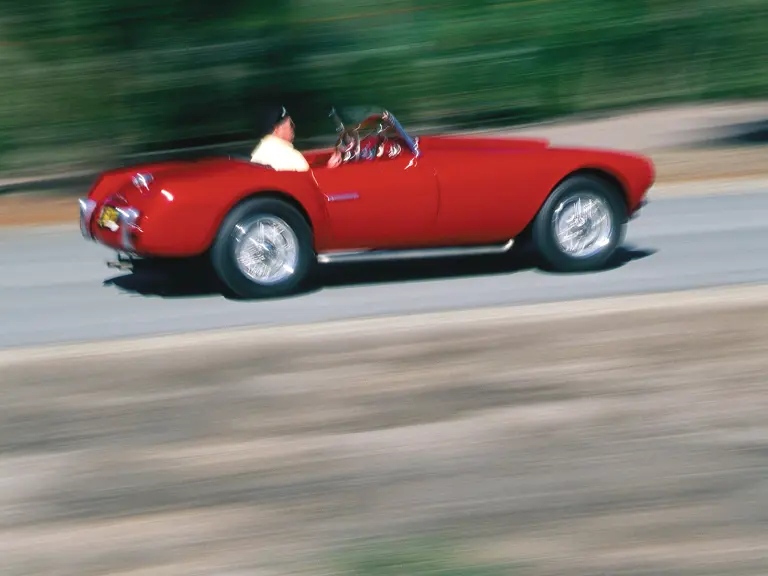
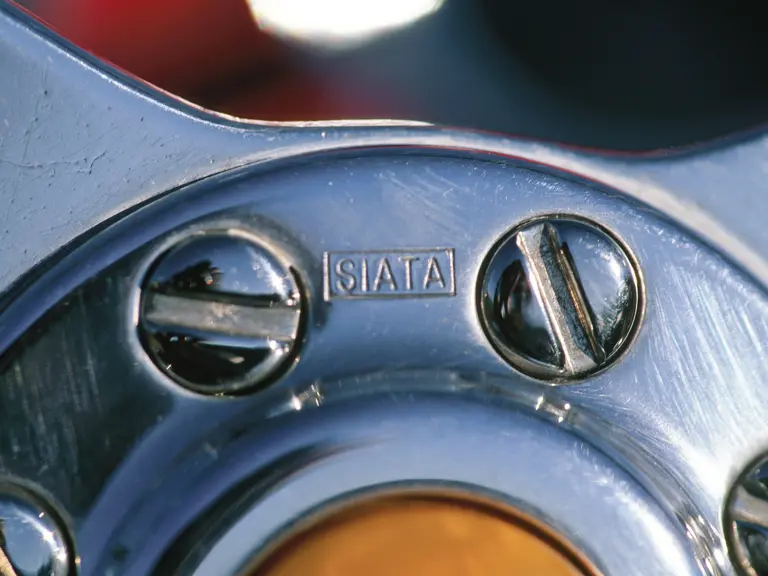
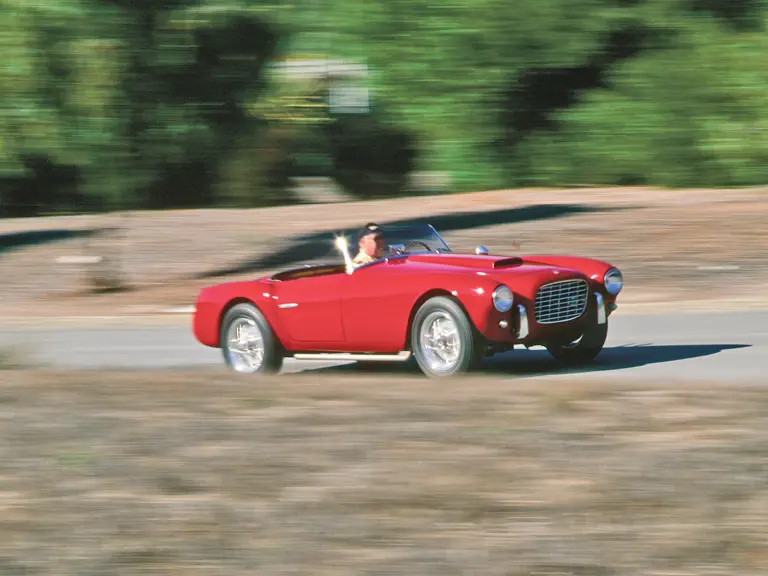
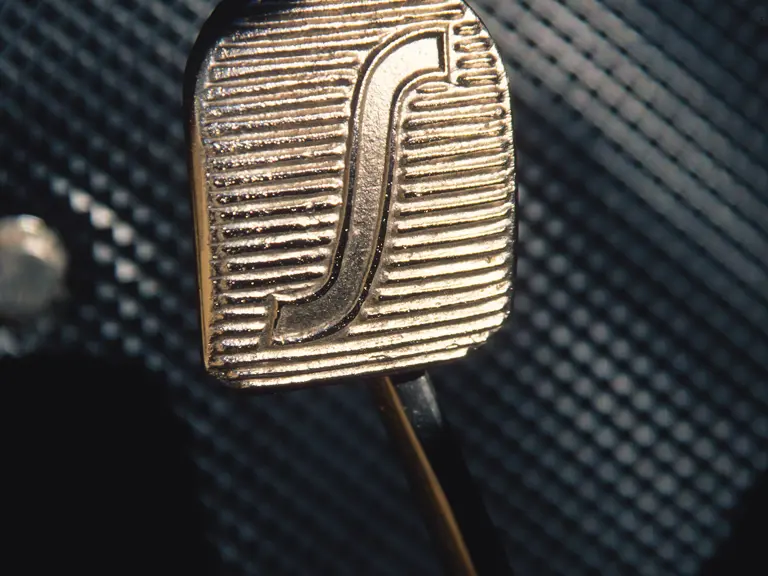
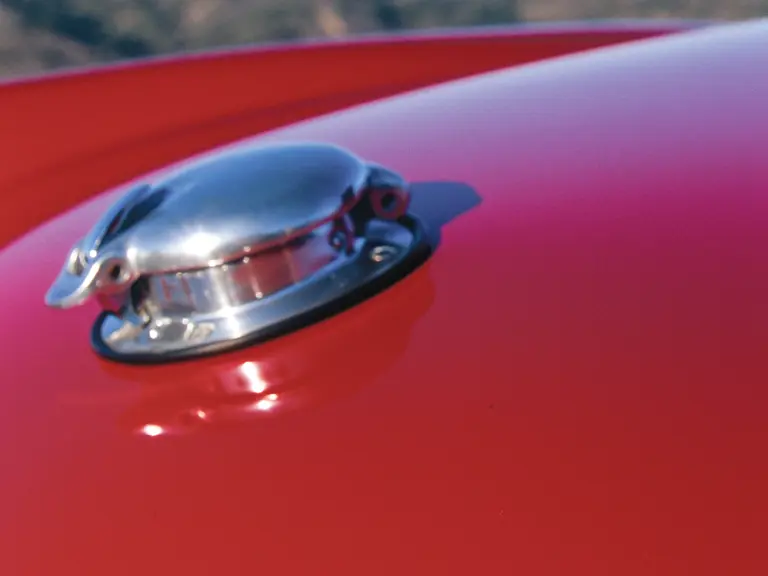
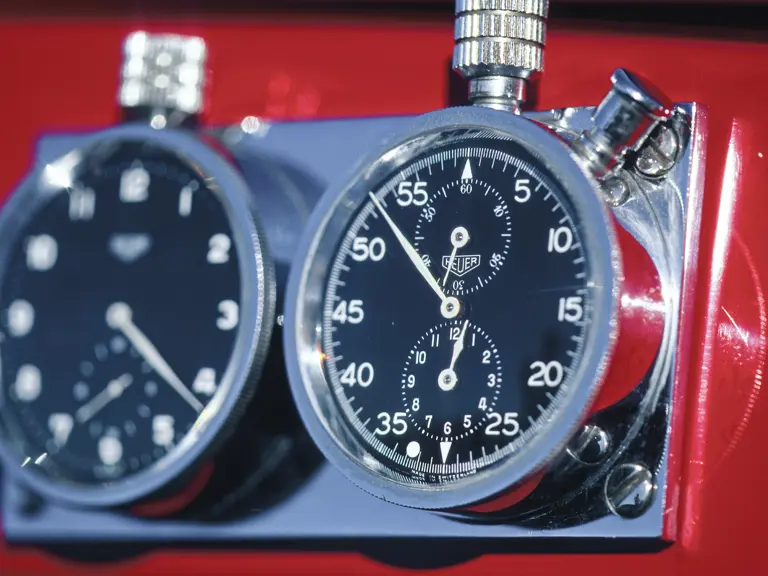
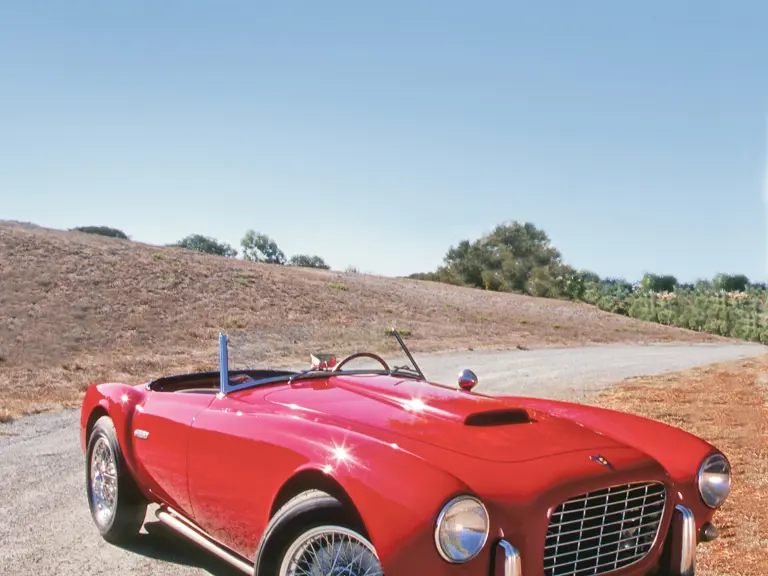

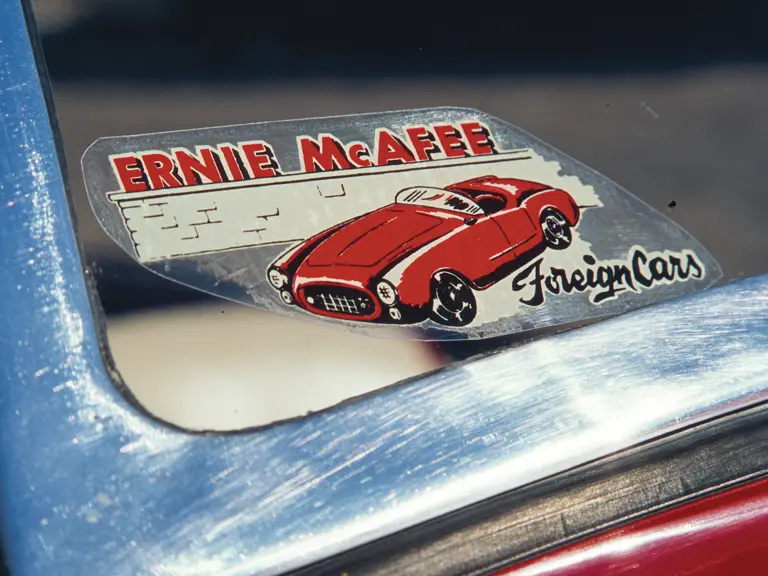
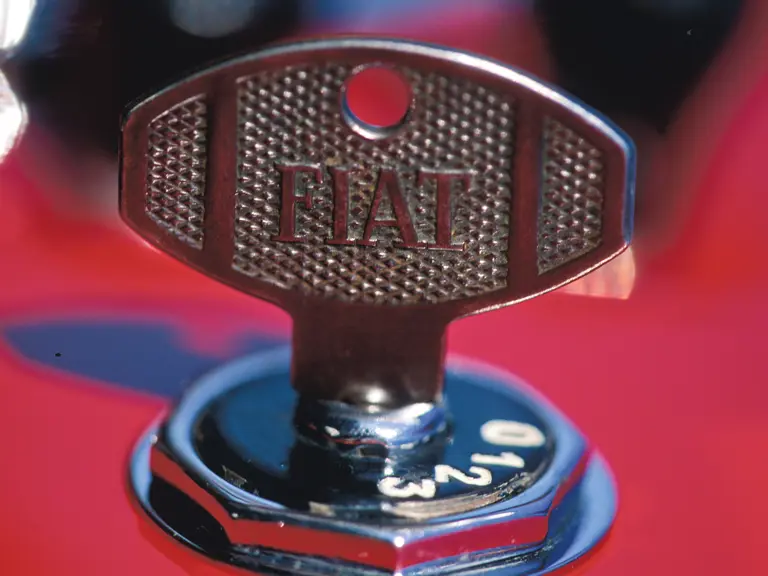
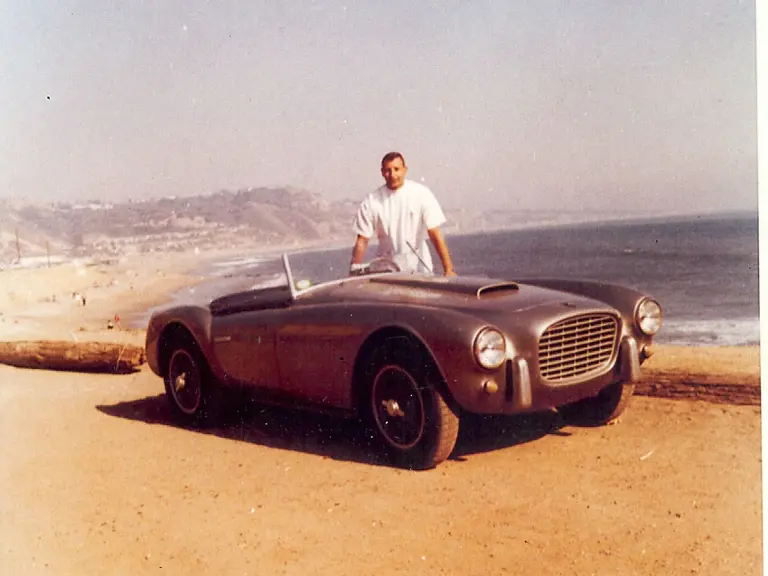

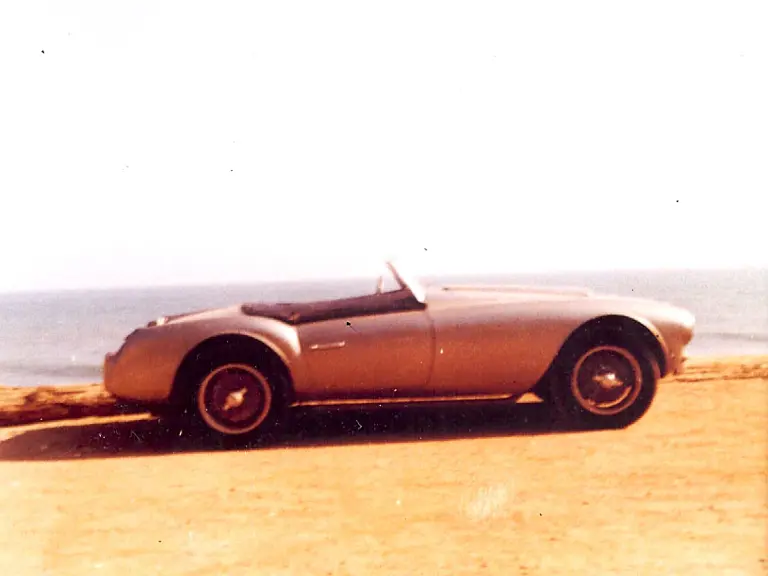
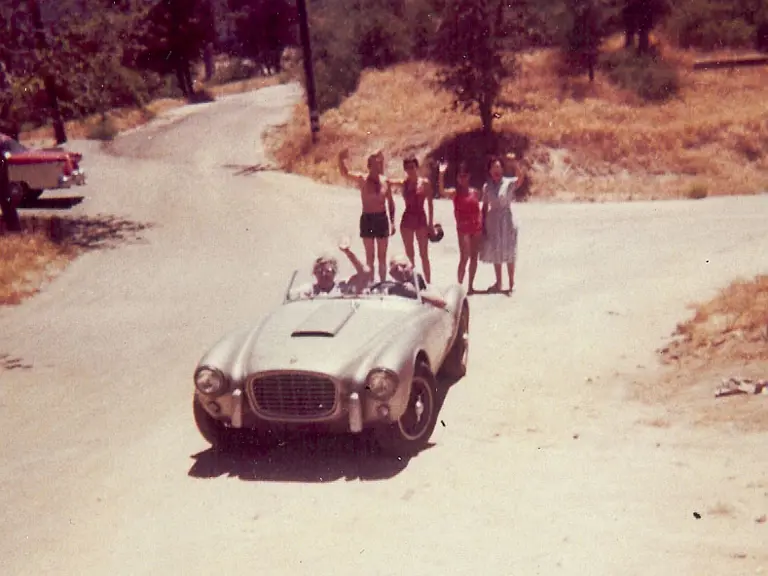
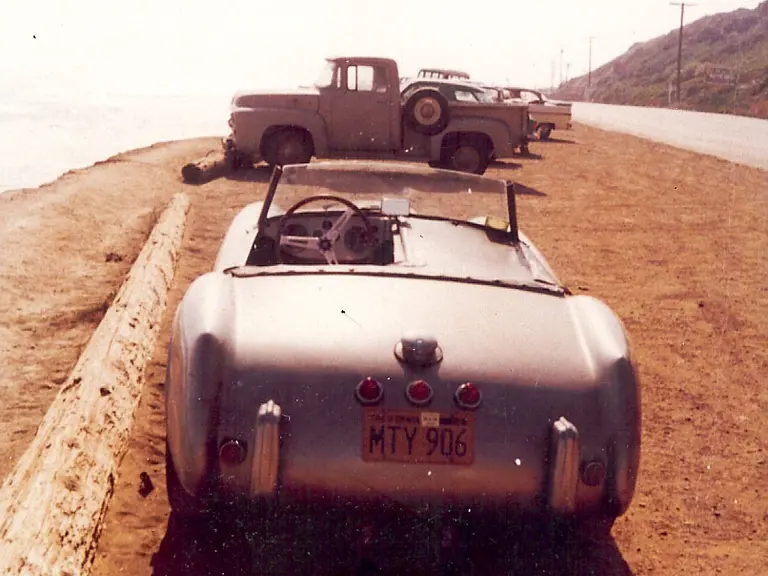
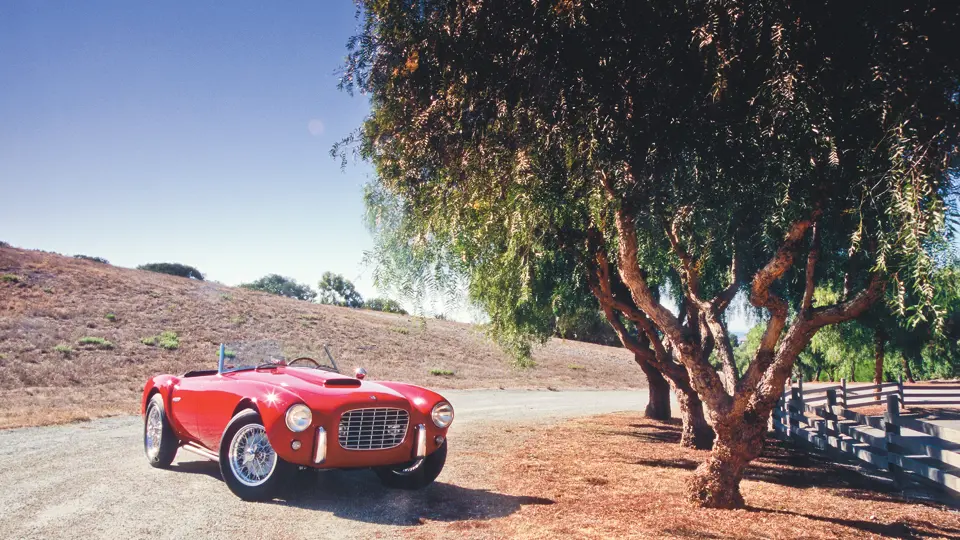
 | Monterey, California
| Monterey, California
